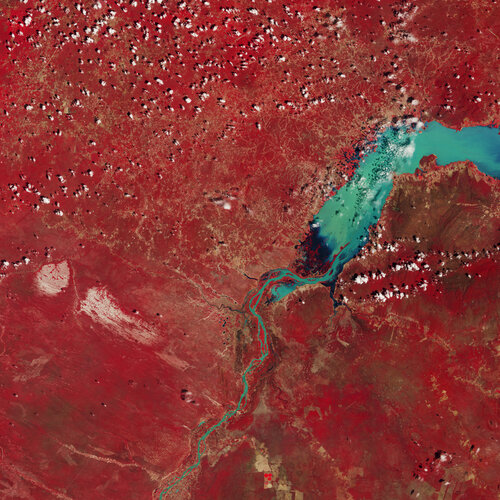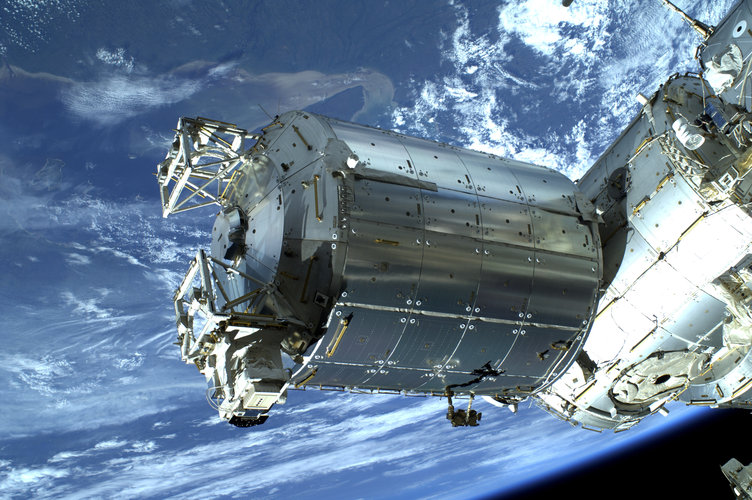
Copernical Team
Friday, 31 January 2025 11:14
Searching for Water on the Moon: UC San Diego Researchers Uncover Clues to Lunar Water's Origins
Los Angeles CA (SPX) Jan 30, 2025
 As humanity envisions establishing a permanent presence on the moon, Mars, and beyond, the challenge of sustaining life comes down to the essentials: oxygen, food, and water. While it is well-known that water exists on the moon, pinpointing its exact locations remains a key question. Is it hidden within craters, trapped in the moon's shadowed regions, or concentrated near the poles? Answering th
As humanity envisions establishing a permanent presence on the moon, Mars, and beyond, the challenge of sustaining life comes down to the essentials: oxygen, food, and water. While it is well-known that water exists on the moon, pinpointing its exact locations remains a key question. Is it hidden within craters, trapped in the moon's shadowed regions, or concentrated near the poles? Answering th
 As humanity envisions establishing a permanent presence on the moon, Mars, and beyond, the challenge of sustaining life comes down to the essentials: oxygen, food, and water. While it is well-known that water exists on the moon, pinpointing its exact locations remains a key question. Is it hidden within craters, trapped in the moon's shadowed regions, or concentrated near the poles? Answering th
As humanity envisions establishing a permanent presence on the moon, Mars, and beyond, the challenge of sustaining life comes down to the essentials: oxygen, food, and water. While it is well-known that water exists on the moon, pinpointing its exact locations remains a key question. Is it hidden within craters, trapped in the moon's shadowed regions, or concentrated near the poles? Answering th
Published in
News
Tagged under
Friday, 31 January 2025 11:14
Will the US get to Mars quicker if it drops or delays plans to visit the Moon?
Nottingham UK (SPX) Jan 31, 2025
 The Artemis program has been Nasa's best chance to get "boots on the Moon" again. But with the new US administration taking guidance from tech entrepreneur Elon Musk, who is focused on Mars colonisation, will they end up abandoning or pushing back lunar missions?
For example, there's been speculation that returning US president Donald Trump may cancel the Space Launch System rocket, which
The Artemis program has been Nasa's best chance to get "boots on the Moon" again. But with the new US administration taking guidance from tech entrepreneur Elon Musk, who is focused on Mars colonisation, will they end up abandoning or pushing back lunar missions?
For example, there's been speculation that returning US president Donald Trump may cancel the Space Launch System rocket, which
 The Artemis program has been Nasa's best chance to get "boots on the Moon" again. But with the new US administration taking guidance from tech entrepreneur Elon Musk, who is focused on Mars colonisation, will they end up abandoning or pushing back lunar missions?
For example, there's been speculation that returning US president Donald Trump may cancel the Space Launch System rocket, which
The Artemis program has been Nasa's best chance to get "boots on the Moon" again. But with the new US administration taking guidance from tech entrepreneur Elon Musk, who is focused on Mars colonisation, will they end up abandoning or pushing back lunar missions?
For example, there's been speculation that returning US president Donald Trump may cancel the Space Launch System rocket, which
Published in
News
Tagged under
Friday, 31 January 2025 08:00
Earth from Space: São Francisco River, Brazil
 Image:
This Copernicus Sentinel-2 image highlights part of the São Francisco River in eastern Brazil.
Image:
This Copernicus Sentinel-2 image highlights part of the São Francisco River in eastern Brazil.
Published in
News
Tagged under
Friday, 31 January 2025 13:10
Week in images: 27-31 January 2025

Week in images: 27-31 January 2025
Discover our week through the lens
Published in
News
Tagged under
Thursday, 30 January 2025 07:39
Using AI for more reliable space missions

As we prepare to go deeper into space, the demand for autonomous systems capable of operating independently from ground control and crew interactions is increasing. Artificial Intelligence (AI) is shaping up to be an essential tool for reaching this goal. With support from ESA's Discovery programme, a team of researchers from Airbus explored how AI can collect and analyse data onboard the Columbus module of the International Space Station (ISS) in order to improve its prognosis and fault detection capabilities.
Published in
News
Tagged under
Thursday, 30 January 2025 09:36
BlackSky secures $100 million contract for next-generation space monitoring capabilities
Los Angeles CA (SPX) Jan 29, 2025
 BlackSky Technology Inc. (NYSE: BKSY) has signed a seven-year contract exceeding $100 million with a long-standing strategic partner in the international defense sector. The agreement ensures annual capacity minimums for high-resolution, real-time monitoring services using BlackSky's current Gen-2 and upcoming Gen-3 space-based technologies, extending through 2032.
"Dawn-to-dusk, high-cade
BlackSky Technology Inc. (NYSE: BKSY) has signed a seven-year contract exceeding $100 million with a long-standing strategic partner in the international defense sector. The agreement ensures annual capacity minimums for high-resolution, real-time monitoring services using BlackSky's current Gen-2 and upcoming Gen-3 space-based technologies, extending through 2032.
"Dawn-to-dusk, high-cade
 BlackSky Technology Inc. (NYSE: BKSY) has signed a seven-year contract exceeding $100 million with a long-standing strategic partner in the international defense sector. The agreement ensures annual capacity minimums for high-resolution, real-time monitoring services using BlackSky's current Gen-2 and upcoming Gen-3 space-based technologies, extending through 2032.
"Dawn-to-dusk, high-cade
BlackSky Technology Inc. (NYSE: BKSY) has signed a seven-year contract exceeding $100 million with a long-standing strategic partner in the international defense sector. The agreement ensures annual capacity minimums for high-resolution, real-time monitoring services using BlackSky's current Gen-2 and upcoming Gen-3 space-based technologies, extending through 2032.
"Dawn-to-dusk, high-cade
Published in
News
Tagged under
Thursday, 30 January 2025 09:36
Adding bridges to stabilize quantum networks
Los Angeles CA (SPX) Jan 27, 2025
 Entangled photons, a cornerstone of quantum computing and communications, face a significant challenge: they vanish after a single use. To address this, researchers at Northwestern University have proposed a strategy to stabilize quantum networks, ensuring functionality even in dynamic and unpredictable environments. By methodically rebuilding lost connections, the network eventually reaches a s
Entangled photons, a cornerstone of quantum computing and communications, face a significant challenge: they vanish after a single use. To address this, researchers at Northwestern University have proposed a strategy to stabilize quantum networks, ensuring functionality even in dynamic and unpredictable environments. By methodically rebuilding lost connections, the network eventually reaches a s
 Entangled photons, a cornerstone of quantum computing and communications, face a significant challenge: they vanish after a single use. To address this, researchers at Northwestern University have proposed a strategy to stabilize quantum networks, ensuring functionality even in dynamic and unpredictable environments. By methodically rebuilding lost connections, the network eventually reaches a s
Entangled photons, a cornerstone of quantum computing and communications, face a significant challenge: they vanish after a single use. To address this, researchers at Northwestern University have proposed a strategy to stabilize quantum networks, ensuring functionality even in dynamic and unpredictable environments. By methodically rebuilding lost connections, the network eventually reaches a s
Published in
News
Tagged under
Thursday, 30 January 2025 09:36
Sidus Space Receives FCC Approval for Direct-to-Device Capability
Los Angeles CA (SPX) Jan 29, 2025
 Sidus Space (NASDAQ: SIDU), a dynamic leader in space mission technology, has received approval from the Federal Communications Commission (FCC) to integrate direct-to-device modules into its LizzieSat satellite constellation. This regulatory milestone enhances the operational scope of LizzieSat, paving the way for advanced global connectivity and data services.
Sidus Space (NASDAQ: SIDU), a dynamic leader in space mission technology, has received approval from the Federal Communications Commission (FCC) to integrate direct-to-device modules into its LizzieSat satellite constellation. This regulatory milestone enhances the operational scope of LizzieSat, paving the way for advanced global connectivity and data services.
 Sidus Space (NASDAQ: SIDU), a dynamic leader in space mission technology, has received approval from the Federal Communications Commission (FCC) to integrate direct-to-device modules into its LizzieSat satellite constellation. This regulatory milestone enhances the operational scope of LizzieSat, paving the way for advanced global connectivity and data services.
Sidus Space (NASDAQ: SIDU), a dynamic leader in space mission technology, has received approval from the Federal Communications Commission (FCC) to integrate direct-to-device modules into its LizzieSat satellite constellation. This regulatory milestone enhances the operational scope of LizzieSat, paving the way for advanced global connectivity and data services.
Published in
News
Tagged under
Thursday, 30 January 2025 09:36
Sierra Space Dream Chaser Spaceplane Passes Key NASA Test in Preparation for ISS Resupply Mission
Los Angeles CA (SPX) Jan 30, 2025
 Sierra Space, a leading innovator in commercial space exploration and defense technology, has announced a significant achievement in its partnership with NASA. The company successfully completed and passed its Joint Test 10B milestone for the Dream Chaser spaceplane. This test is a crucial step in Dream Chaser's mission to deliver supplies to the International Space Station (ISS).
The test
Sierra Space, a leading innovator in commercial space exploration and defense technology, has announced a significant achievement in its partnership with NASA. The company successfully completed and passed its Joint Test 10B milestone for the Dream Chaser spaceplane. This test is a crucial step in Dream Chaser's mission to deliver supplies to the International Space Station (ISS).
The test
 Sierra Space, a leading innovator in commercial space exploration and defense technology, has announced a significant achievement in its partnership with NASA. The company successfully completed and passed its Joint Test 10B milestone for the Dream Chaser spaceplane. This test is a crucial step in Dream Chaser's mission to deliver supplies to the International Space Station (ISS).
The test
Sierra Space, a leading innovator in commercial space exploration and defense technology, has announced a significant achievement in its partnership with NASA. The company successfully completed and passed its Joint Test 10B milestone for the Dream Chaser spaceplane. This test is a crucial step in Dream Chaser's mission to deliver supplies to the International Space Station (ISS).
The test
Published in
News
Tagged under
Thursday, 30 January 2025 09:36
Vast and SpaceX Call for Research Proposals to Advance Space Habitation
Los Angeles CA (SPX) Jan 30, 2025
 Vast and SpaceX have issued a joint request for research proposals from the global space science community to drive progress in long-term human space habitation and exploration. The two companies, building upon their partnership, aim to support high-impact scientific research that benefits both life on Earth and humanity's expansion into space. Proposals will be reviewed based on scientific and
Vast and SpaceX have issued a joint request for research proposals from the global space science community to drive progress in long-term human space habitation and exploration. The two companies, building upon their partnership, aim to support high-impact scientific research that benefits both life on Earth and humanity's expansion into space. Proposals will be reviewed based on scientific and
 Vast and SpaceX have issued a joint request for research proposals from the global space science community to drive progress in long-term human space habitation and exploration. The two companies, building upon their partnership, aim to support high-impact scientific research that benefits both life on Earth and humanity's expansion into space. Proposals will be reviewed based on scientific and
Vast and SpaceX have issued a joint request for research proposals from the global space science community to drive progress in long-term human space habitation and exploration. The two companies, building upon their partnership, aim to support high-impact scientific research that benefits both life on Earth and humanity's expansion into space. Proposals will be reviewed based on scientific and
Published in
News
Tagged under
